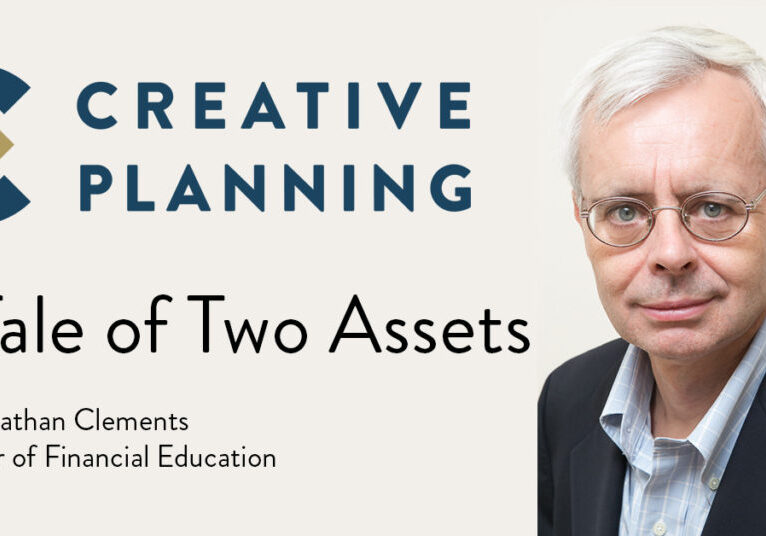It’s tough to do two things at once.
After we quit the workforce, what we want is a reliable stream of income. For that, high-quality bonds are the go-to investment, offering predictable interest payments without too much risk.
Problem is, after we quit the workforce, what we also want is growth, so our savings last as long as we do. For that, bonds aren’t such a great choice. Sure, they’ll keep kicking off income—but with every passing year, that income will likely be worth less, thanks to inflation. Instead, if the goal is handsome, inflation-beating gains over the long haul, the top choice is usually stocks.
All this reminds me of the cartoon that a onetime colleague at The Wall Street Journal had taped to his office door. “It was the best of times, it was the worst of times,” reads an exasperated editor, as he reviews a manuscript he’s just received. “Come along, Mr. Dickens, it could hardly have been both.”
And yet, for retirees, it does indeed need to be both—both stocks and bonds, combined in the right proportions, so that a portfolio can be safely tapped for income in the short-term, while still delivering enough long-run growth that this income rises with inflation and keeps doing so until death do us part.
But what should those proportions be? The answer will be different for each of us. You might keep more in stocks if Social Security benefits will cover a hefty portion of your retirement living expenses or if you’ll receive a traditional employer pension that pays you income every month.
You might also keep more in stocks if you plan to continue working part-time, even after you retire from your fulltime job. Let’s say you can make $40,000 a year with occasional consulting projects. For as long as you keep pulling in that income, you could view that $40,000 a year as adding perhaps $1 million to your portfolio’s value—with that $1 million invested entirely in bonds.
You might also be more aggressive if you expect to receive various lump sums, such as installment payments from the sale of a business or the proceeds from trading down to a smaller home. After you retire, you might even receive an inheritance from your parents. Yes, that’s a serious possibility: My mother is retired—as are two of her four children.
On the other hand, you might be less aggressive if you carry debt into retirement. Servicing that debt means you’ll need more income—and to generate that extra income, you should probably hold a more conservative portfolio.
That brings us to perhaps the most important driver of a retirement portfolio’s stock-bond mix: How much income you need. Once retired, you face a tradeoff between how much you want to spend each year and how much you’d like to leave behind for your heirs and your favorite charities. The more income you take today, the less that will be left for your estate—and the more conservative your portfolio needs to be.
To understand why, consider two scenarios. First, suppose you have $2 million in retirement savings and your goal is a 4% portfolio withdrawal rate, or $80,000 a year, on top of whatever you get from Social Security and any employer pension. To generate that $80,000, you might hold stocks and bonds in roughly equal amounts. Between the dividends from your stocks and the interest payments from your bonds, you should be able to cover half or more of your desired portfolio withdrawal.
The rest would come from occasionally selling investments. What if stocks suffer a long bear market? With a stock-heavy portfolio, things could be dicey—especially if the bear market strikes early in retirement. The reason: At that juncture, your portfolio will likely be at its maximum value, so a decline in share prices could cause big losses in dollar terms. Add those market losses to your own need for spending money, and the financial damage is potentially huge—and yet you might still need to pay for another 25 or 30 years of retirement. Financial experts have a name for this nasty financial dilemma: sequence-of-return risk.
What to do? To limit the damage done, you need to keep a fair amount in bonds. Not only will the bonds reduce your portfolio’s overall investment loss, but also you could sell from that side of your portfolio to generate income, while you wait for your stocks to recover.
To be sure, there’s a price to be paid for this bear market protection: With less money in stocks, your portfolio will likely generate lower long-run returns—and there will be less money for your estate’s beneficiaries.
Now, imagine a second scenario: Instead of $80,000 a year from your $2 million nest egg, suppose you need just $40,000—a 2% withdrawal rate. Suddenly, things look far different. A severe bear market early in retirement would still cause a heap of short-term damage. But there would be less need to sell investments to generate income. In fact, with stocks today yielding roughly 2%, you might cover your income needs largely or entirely through dividends. Result: You could potentially keep far more of your portfolio in stocks—assuming you have a strong stomach for risk.
Admittedly, there’s a risk that companies will cut their dividends during a severe market downturn. Indeed, if you held the S&P 500 companies during the 2008-09 financial crisis, your dividend income would have dropped by 24%. Still, if you only needed $40,000 a year from your $2 million, a portfolio that’s heavy on stocks and light on bonds would have kept you in groceries during this rocky period—and set you up nicely for the long bull market we’ve enjoyed ever since.


